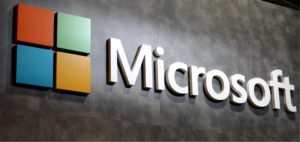This website uses cookies so that we can provide you with the best user experience possible. Cookie information is stored in your browser and performs functions such as recognising you when you return to our website and helping our team to understand which sections of the website you find most interesting and useful.
 Microsoft, which joined the Cloud rush a few years ago with Azure, is gaining on market leader Amazon Web Services (AWS). Although AWS enjoys a roughly 30% market share, Az
Microsoft, which joined the Cloud rush a few years ago with Azure, is gaining on market leader Amazon Web Services (AWS). Although AWS enjoys a roughly 30% market share, Az
ure now has 11% of the market, and is increasing at 100% year over year (according Synergy Research Group). They’re also going after the private and hybrid cloud segments with Azure Pack, an OpenStack-like suite of cloud foundation software and application services, and Cloud Platform System (CPS), a Converged Infrastructure (CI) solution combining Dell hardware with Windows Server 2012, MS Systems Center and Azure Pack.
Now, Microsoft is stalking the Hyperconverged Infrastructure (HCI) market creating another Microsoft alternative to the VMware status quo. Storage Spaces Direct, using the acronym “S2D” (SSD was already taken), is a software-defined storage solution that runs in the Windows 2016 kernel, providing shared storage between physical hosts in a cluster (minimum of 3 nodes). With the potential for cost advantages, and the simplicity of being embedded into the OS, along with Hyper-V, Microsoft could make life difficult for the other hyperconverged solutions, and may be the elephant in the room in this market.
Like their growing Azure solutions in the cloud market, the leader in server operating systems shouldn’t be underestimated in the HCI market. S2D will be a standard feature of Windows Server 2016, which is scheduled for release later in September.
Hyper-V hasn’t threatened VMware’s dominance of the hypervisor market, but there’s a clear desire by many companies to reduce their dependence on VMware, and their licensing costs. In the HCI market, we’re seeing no-charge KVM derivatives from companies like Nutanix and Scale Computing offer a path to getting off of VMware.
Evaluator Group had a briefing recently with DataON, a server and systems supplier for Microsoft products that will be selling hyperconverged solutions with Windows Server 2016. I’m sure we’ll see hyperconverged offerings from other Microsoft hardware partners in the near future as well. The Cloud and Azure is a bigger play than HCI and Storage Spaces Direct but this will bring a new competitor into the hyperconverged space, one that’s getting increasingly difficult for smaller players with the emergence of VSAN, VxRail and the strength of combined Dell EMC.
More on Storage Spaces Direct
Storage Spaces was first introduced in Windows Server 2012 as a volume manager and data resiliency solution (essentially software RAID). Storage Spaces Direct uses a distributed RAID scheme for data resiliency, (either a mirror or parity process) spreading data across drives in the cluster. S2D is built on the Software Storage Bus (SSB), a virtual bus architecture that connects nodes with SMB Direct, a feature of SMB 3.0 that uses RDMA NICs (iWARP or RoCE) over 10GbE or 40GbE to greatly reduce inter-node latency.
Companies can deploy S2D and Hyper-V on the same server in a “hyperconverged” configuration, or disaggregate the compute function by running Hyper-V on separate servers from those running S2D. Microsoft has developed the new Resilient File System (ReFS) designed to replace NTFS in Hyper-V deployments with improved tiering, erasure coding, read caching and block cloning, which has been optimized for virtual workloads.
Both S2D and VSAN can be used to create a hyperconverged infrastructure (HCI) appliance. But VSAN (as part of the VMware kernel) does require VMware to be running on each node. S2D runs in the Windows Server 2016 kernel, which means it can be deployed as a “pure” scale-out storage solution, without a hypervisor.
As the first major release for this Windows SDS solution, one would expect adoption to move slowly. But that should change as the product matures and companies see the benefit of a hyperconverged infrastructure solution that’s embedded into the Windows operating system. For IT organizations that have chosen Windows, this could be the incentive they need to make the switch from VMware.
Many products have long lists of features that sound the same but work very differently. It’s important to think outside of the checkbox of similar-sounding features and understand how technologies and products differ.

